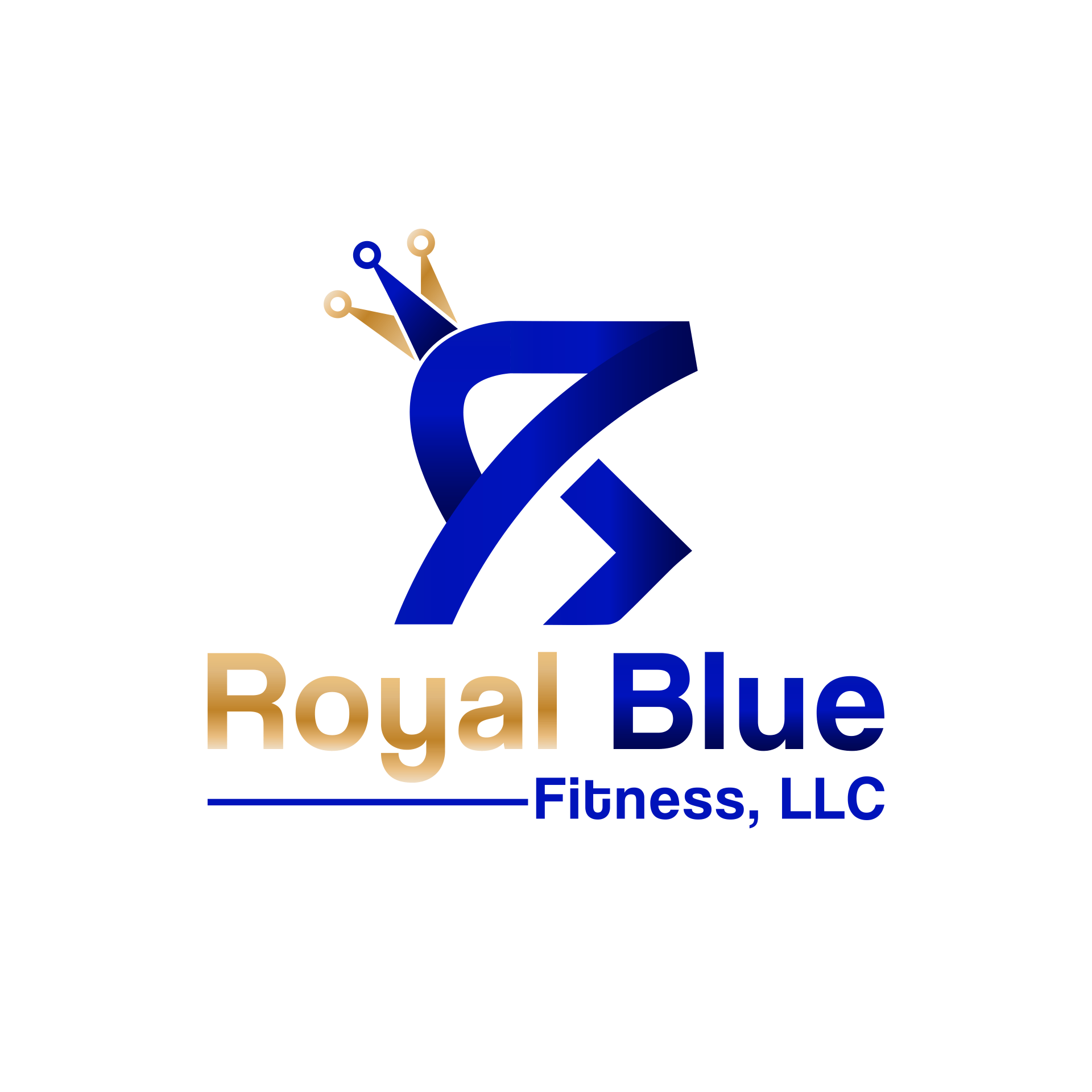Muscle Matters: Preventing Sarcopenia for Lifelong Vitality
Introduction

Sarcopenia, characterized by the age-related loss of muscle mass, strength, and function, is more than just a sign of aging; it can significantly impact the quality of life and independence of older adults. The term "sarcopenia" was first introduced in the late 20th century, derived from the Greek words "sarx" for flesh and "penia" for loss. It highlights the essence of muscle loss with age.
Recent studies, including meta-analyses published in renowned science journals, shed light on the prevalence and impact of sarcopenia. The National Institutes of Health (NIH) reports that sarcopenia affects approximately 10% of adults over 50. However, the prevalence rises with age, reaching as much as 50% in those 80 and older. These statistics underscore the widespread nature of sarcopenia and its potential to become a significant public health concern if not addressed proactively.
Did you know that sarcopenia can start to affect adults as early as their 40s, with muscle mass declining approximately 1-2% per year after the age of 50? Another fascinating aspect is that sarcopenia is not just about losing muscle but also about decreasing muscle function, which can lead to an increased risk of falls and frailty.
Understanding sarcopenia is crucial, as it affects nearly one in three adults over 60 and is a significant factor in the loss of mobility and autonomy in later years. Addressing sarcopenia through targeted interventions can help maintain muscle function, enhance stability, and promote a more active and fulfilling lifestyle as we age.
Understanding Sarcopenia

Definition and Overview
Sarcopenia is the progressive loss of skeletal muscle mass and strength with aging. This condition is not merely a result of getting older. Biological, physiological, and lifestyle factors influence it. It leads to a decline in physical function, increased risk of falls, and a lower quality of life among the affected individuals.
Causes and Risk Factors
- Biological Causes: Sarcopenia occurs when the body naturally declines in its ability to synthesize muscle protein efficiently. Hormonal changes, such as significantly reduced levels of growth hormone and testosterone, also contribute to muscle loss.
- Physical Inactivity: A sedentary lifestyle accelerates muscle loss. Without regular exercise, muscles gradually shrink in size and lose strength.
- Nutritional Deficits: Inadequate protein and essential nutrient intake can hinder muscle maintenance and growth.
- Chronic Diseases: Conditions like diabetes, heart disease, and chronic inflammation can exacerbate muscle degradation.
- Genetic Factors: A genetic predisposition to sarcopenia may affect how quickly muscle loss occurs with age.
Effects on Health
The impact of sarcopenia on health can be significant. It can lead to:
- Decreased Mobility: Loss of muscle mass and strength can make daily activities such as walking, climbing stairs, and lifting objects more challenging.
- Increased Risk of Falls and Fractures: Weaker muscles and compromised balance elevate the risk of falls, which can result in fractures and other injuries.
- Reduced Independence: As sarcopenia progresses, it may become more difficult for individuals to live independently due to decreased physical capabilities.
Understanding these aspects of sarcopenia is crucial for developing effective strategies to prevent or manage the condition, helping individuals maintain their strength and mobility as they age.
Exercise Interventions for Sarcopenia
Strength Training
Strength training, encompassing traditional weightlifting and resistance exercises, is pivotal in mitigating muscle loss and improving strength for those with sarcopenia. This training mode utilizes resistance to challenge muscle groups to grow in size and increase in strength.
- Examples:
- Free weights (dumbbells, barbells)
- Cable machines that offer continuous resistance
- Bodyweight exercises like push-ups, pull-ups, and lunges
- Elastic resistance bands for exercises like bicep curls or leg presses
- Functional fitness exercises, such as squats, which mimic daily activities
Strength Training Benefits:
Strength training enhances muscle fiber size and overall muscle function, improving muscle strength and mass and boosting metabolism. Regular exercise engagement contributes to physical independence and a better quality of life.

Aerobic Training
Aerobic training is essential for maintaining cardiovascular health, which can be increasingly affected by sarcopenia. As muscle mass diminishes, the body's efficiency in oxygen utilization may decline, affecting stamina and endurance. Aerobic training helps counteract these effects by improving the heart's capacity to pump blood and oxygenate the body, supporting the functioning of muscle tissues.
- Examples:
- Brisk walking
- Cycling
- Swimming
- Elliptical machine workouts
Aerobic Training Benefits:
In addition to improving heart health and increasing stamina, aerobic training also aids in maintaining a healthy weight and promoting overall physical function. These factors are vital for mitigating the impacts of sarcopenia on cardiovascular endurance and keeping active and independent living.

Balance and Flexibility Training
As individuals age, the sarcomeres in muscles shorten. A sarcomere is one of the components of the muscle responsible for contracting and lengthening. A shortened sarcomere causes reduced elasticity, thus decreasing our overall flexibility compared to when we are younger. With reduced muscle mass due to sarcopenia, there is also likely a change in balance due to weakened neuromuscular connections. A combination of decreased flexibility and impaired balance increases the risk of falling for individuals with sarcopenia, so balance and flexibility training is quintessential for improved quality of life.
- Examples:
- Yoga
- Tai chi
- Pilates
- Stretching routines
Balance and Flexibility Training Benefits:
These activities enhance body awareness and coordination, which are vital for maintaining stability and preventing falls. Improved flexibility contributes to a broader range of motion. At the same time, better balance reduces the risk of falls, supporting overall mobility and function in aging populations affected by sarcopenia.
This comprehensive approach to exercise, incorporating strength, aerobic, balance, and flexibility training, is essential in managing sarcopenia and fostering a more active and healthy lifestyle in older adults.

Nutritional Support for Sarcopenia
Protein Intake
Adequate protein consumption is vital for muscle maintenance and growth, especially in the context of sarcopenia. Protein provides the essential amino acids necessary for muscle protein synthesis, which is critical in combating muscle loss associated with aging.
- Recommendations: Older adults should aim for a higher protein intake, typically 1.2 to 2.0 grams per kilogram of body weight per day, depending on their physical activity level and overall health. For detailed guidance, the American Journal of Clinical Nutrition offers extensive research on protein needs for older adults.
- Sources: Include a variety of protein-rich foods like lean meats, poultry, fish, eggs, dairy products, legumes, and nuts in the diet.
Vitamins and Minerals
Specific vitamins and minerals are essential for muscle health and function. For example, vitamin D plays a crucial role in muscle metabolism and function, and a deficiency is linked to an increased risk of sarcopenia.
- Key Nutrients:
- Vitamin D and Calcium: Essential for bone health, which supports muscle function.
- Magnesium: Important for muscle contraction and relaxation.
- Potassium: Helps with muscle function and prevents cramps.
- Incorporation into Diet: Consume a balanced diet with fruits, vegetables, lean proteins, and whole grains to ensure adequate intake of these nutrients. Consider fortified foods or supplements if recommended by a healthcare provider.
Dietary Planning
Creating a balanced diet that supports muscle health and overall wellness is crucial for managing sarcopenia.
- Guidance
- Ensure regular consumption of high-quality proteins and nutrient-dense foods.
- Include a variety of colorful fruits and vegetables to provide a range of vitamins, minerals, and antioxidants.
- Opt for whole grains and healthy fats, like those found in olive oil, nuts, and avocados.
- Stay hydrated and limit your processed foods high in sugar and saturated fats intake.
A well-planned diet, rich in essential nutrients, supports muscle maintenance and overall health, helping mitigate sarcopenia's effects. Regular consultation with a nutritionist or healthcare provider can help tailor dietary plans to individual needs, ensuring optimal nutritional support for muscle health.

Lifestyle Modifications to Manage Sarcopenia
Increasing Physical Activity
Regular engagement in physical activities that promote muscle strength and endurance is essential in managing sarcopenia. Physical activity helps build and maintain muscle mass and improves overall physical function and well-being.
- Strategies:
- Incorporate a mix of aerobic, strength, and flexibility exercises into weekly routines.
- Engage in daily activities that encourage movement, like gardening, walking, or cycling.
- Set realistic goals to increase the intensity and duration of physical activities gradually.
Improving Diet
Diet plays a crucial role in countering muscle loss associated with sarcopenia. Making informed nutritional adjustments can significantly support muscle maintenance and overall health.
- Tips:
- Increase protein intake to support muscle repair and growth, aiming for lean protein sources.
- Include foods rich in omega-3 fatty acids, antioxidants, and anti-inflammatory properties to support muscle and joint health.
- Ensure a balanced intake of fruits, vegetables, whole grains, and healthy fats to provide a comprehensive nutrient profile.
Regular Health Check-ups
Regular health check-ups are vital to monitor health status and make necessary adjustments to care plans, especially for older adults who are more susceptible to sarcopenia.
- Recommendations:
- Schedule annual visits with a healthcare provider to assess muscle function and overall health.
- Discuss any concerns about physical activity levels, diet, or muscle strength during these visits.
- Consider screenings and tests recommended by healthcare professionals to monitor bone density, muscle mass, and other relevant health indicators.
Adopting these lifestyle modifications can significantly reduce the effects of sarcopenia, enhance quality of life, and maintain independence as individuals age. Regular physical activity, a balanced diet, and consistent health monitoring are key strategies for combating the effects of sarcopenia and promoting healthy aging.
Royal Blue Fitness: Tailored Support for Sarcopenia

Customized Exercise Programs
At Royal Blue Fitness, we recognize the unique challenges posed by sarcopenia, particularly in the aging population. Our approach involves creating personalized exercise plans designed to combat this condition, focusing on enhancing muscle strength and promoting functional improvement.
- Approach: We conduct thorough assessments to understand each client's needs, health status, and fitness level. Based on this information, we design exercise programs that combine strength training, aerobic activities, and balance and flexibility exercises. These programs are tailored to safely and effectively build muscle mass and enhance overall physical function.
- Implementation: Our programs are structured to progressively increase in intensity and complexity, ensuring continuous muscle strength and functional capabilities improvement. This gradual progression helps prevent overexertion and maximizes the effectiveness of the exercise regimen.
Expert Guidance and Support
The Royal Blue Fitness team includes skilled trainers and nutritionists dedicated to providing our clients with the highest level of support. Our professionals are experts in managing sarcopenia and other age-related conditions, and they guide clients through every step of their fitness and nutritional journey.
- Training Expertise: Our trainers possess in-depth knowledge of exercise science and geriatric fitness, enabling them to craft and supervise exercise routines that are safe, effective, and enjoyable for older adults.
- Nutritional Support: Our nutritionists offer personalized dietary guidance to ensure clients receive the optimal mix of nutrients to support muscle health and overall well-being. They work closely with each individual to create eating plans that are nutritious, satisfying, and aligned with their health goals.
At Royal Blue Fitness, we are committed to providing tailored support for individuals with sarcopenia. Our customized exercise programs, expert guidance, and nutritional advice empower our clients to improve their muscle strength, enhance their functional abilities, and lead a more active and fulfilling life.
Conclusion

The journey through understanding and managing sarcopenia underscores the critical role of proactive measures in preserving muscle strength and enhancing the quality of life for older adults. By embracing strength training, aerobic activities, and balance and flexibility exercises, individuals can significantly mitigate the effects of sarcopenia. These strategies form a robust defense against this condition's muscle loss and functional decline.
Royal Blue Fitness is optimal for those seeking a comprehensive, personalized approach to combating sarcopenia. With our expert-led support, tailored exercise programs, and dedicated nutritional guidance, we empower our clients to navigate the challenges of sarcopenia confidently. Our commitment to individualized care ensures that clients can achieve their health and wellness goals, maintain their independence, and enjoy a higher quality of life.
At Royal Blue Fitness, we are more than just a gym; we are a nurturing community dedicated to supporting each individual's journey towards better health. Our approach is caring and holistic, focused on enriching our clients' lives through personalized fitness and nutritional strategies. Join us at Royal Blue Fitness, where your journey to managing sarcopenia starts with guided compassion, expertise, and a commitment to your long-term well-being.
Resources for Sarcopenia
To further explore sarcopenia, its management, and prevention strategies, here are some of the most reliable sources available:
- National Institute on Aging (NIA): Provides comprehensive information on sarcopenia as part of age-related changes in health. National Institute on Aging - Sarcopenia
- American Journal of Clinical Nutrition: Offers extensive research and articles on protein needs and nutritional strategies for older adults to combat sarcopenia. American Journal of Clinical Nutrition
- International Osteoporosis Foundation: Although primarily focused on bone health, the foundation provides valuable resources on sarcopenia due to its close relationship with osteoporosis. International Osteoporosis Foundation
- The Journal of Cachexia, Sarcopenia and Muscle: A specialized journal that publishes research specifically related to sarcopenia and muscle wasting conditions. Journal of Cachexia, Sarcopenia and Muscle
- PubMed Central: A free full-text archive of biomedical and life sciences journal literature at the U.S. National Institutes of Health's National Library of Medicine (NIH/NLM) offering various studies and articles on sarcopenia. PubMed Central
These resources provide a wealth of information for those interested in understanding more about sarcopenia, its effects on health, and how to manage or prevent it through lifestyle changes, exercise, and nutrition.
Subscribe to Our Newsletter and posts



